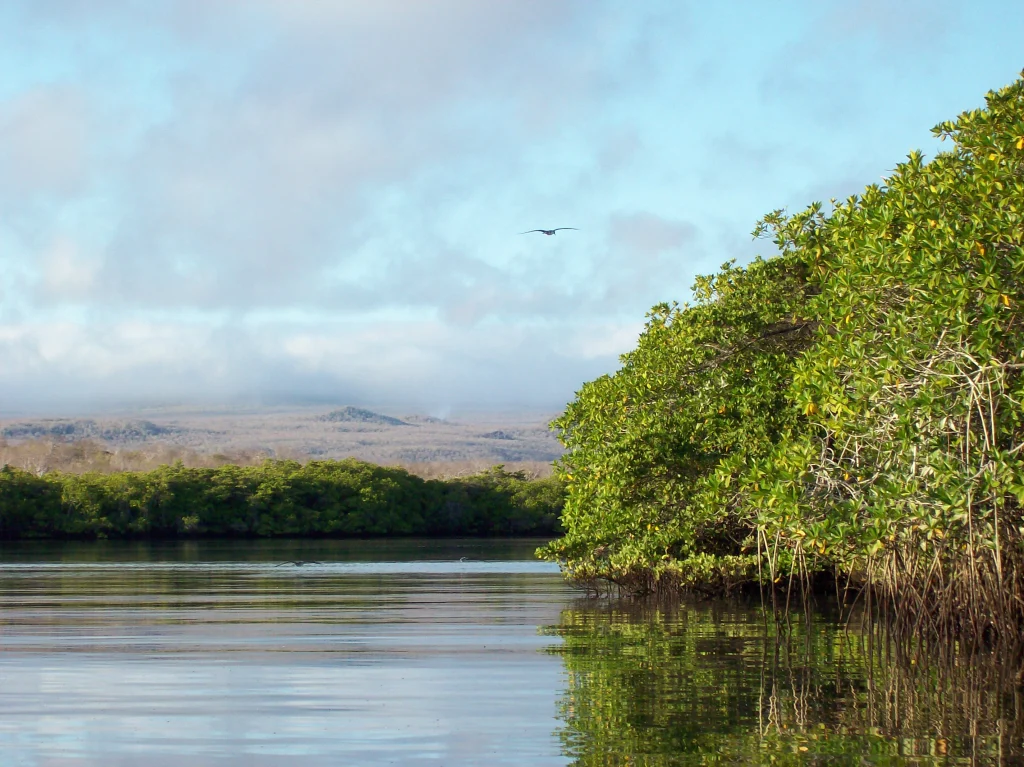Mangroves are of global importance
Mangroves grow along tropical or subtropical coasts. They grow in muddy soil and salty water, forming dense forest with roots that are adapted to tide changes. The mangrove ecosystems are vital to the marine-coastal biodiversity. The mangroves also play a vital role in coastal protection, stabilizing the shores and reducing erosion. They also act as natural barriers to coastal flooding.
Galapagos Mangroves
Galapagos has four distinct species of mangrove: the red mangrove (also known as black mangrove), white mangrove (also called button mangrove), and black mangrove. Each species has its own adaptations. The white mangrove, for example, has roots called pneumatophores that extend upwards from the soil and allow the mangroves to breathe oxygen even when the soil is waterlogged. These characteristics are essential not only for the survival and growth of these trees, but also in the marine environment.
The Galapagos archipelago is home to a variety of marine species that are essential for their complete life cycle. These include pelicans and frigatebirds as well as sea turtles and sea lions. They also provide habitats for reef fish species such as snapper and bacalao, which is a type cod.
Charles Darwin Foundation has recently released a study that highlights the importance of mangroves to the Galapagos archipelago in terms of their ecological and socioeconomic value. The study found that only 5% mangroves in Galapagos were fully protected against extractive activities by the Marine Reserve Zone established in 2001.
Commitment to conservation
On International Mangrove Protection Day today, we would like to highlight the importance of protecting these ecosystems, as they are a vital component of global environmental health. We can ensure that the mangroves in Galapagos, and other places, will continue to provide their valuable environmental services by working together and implementing effective conservation policies.





